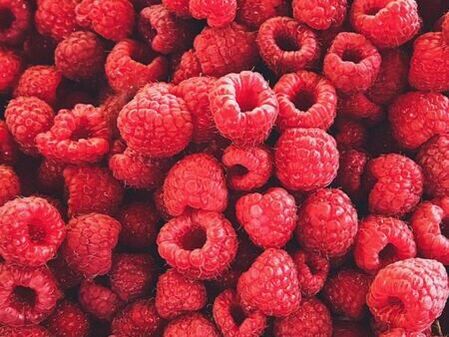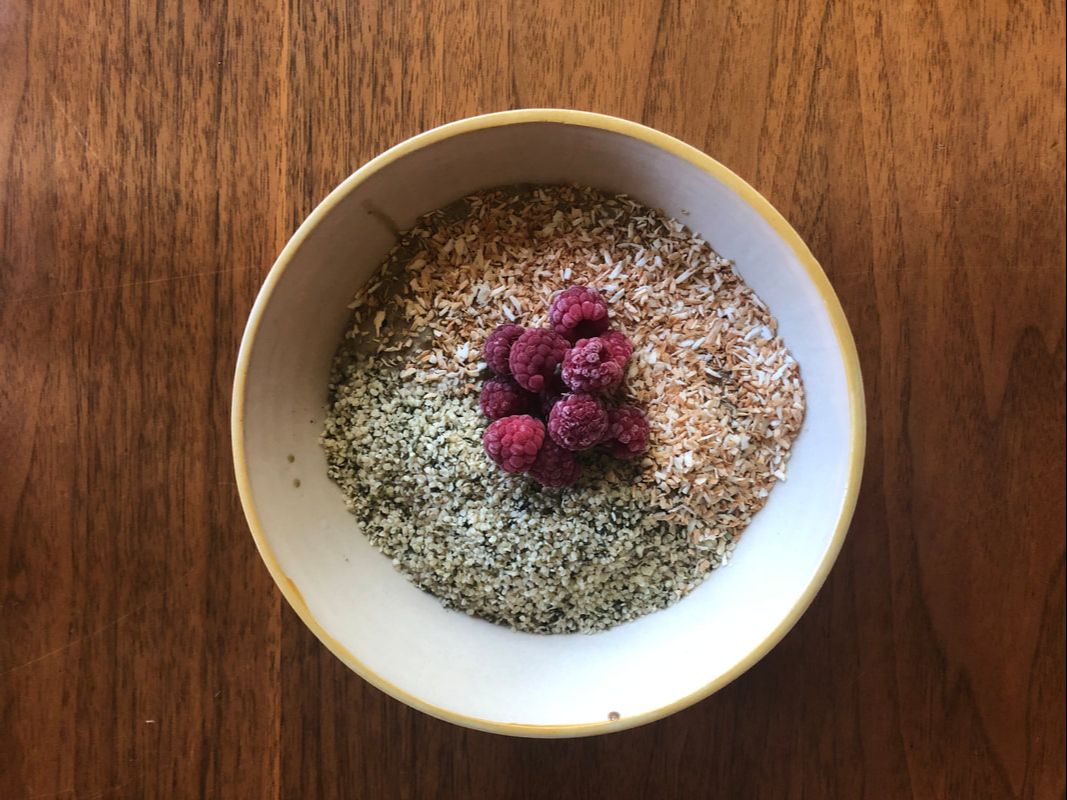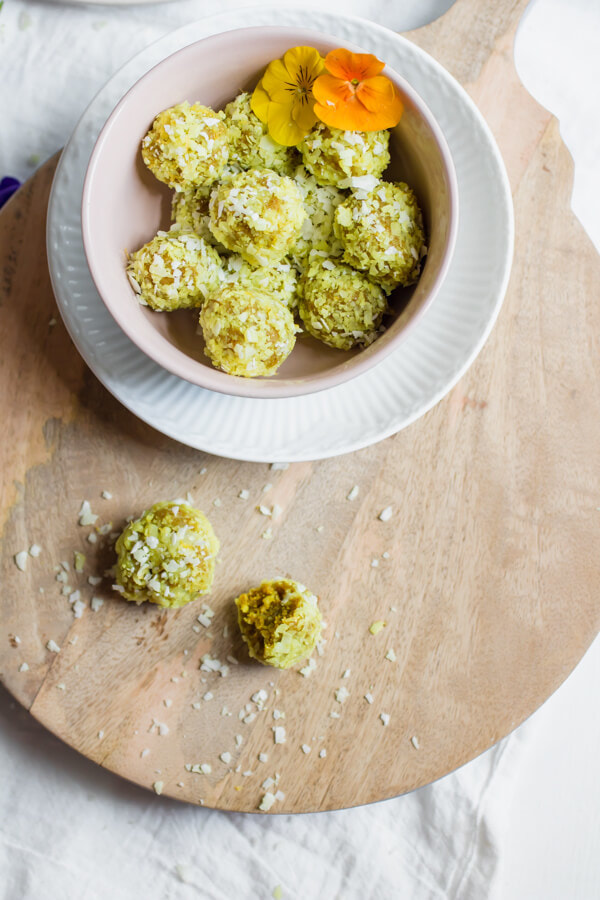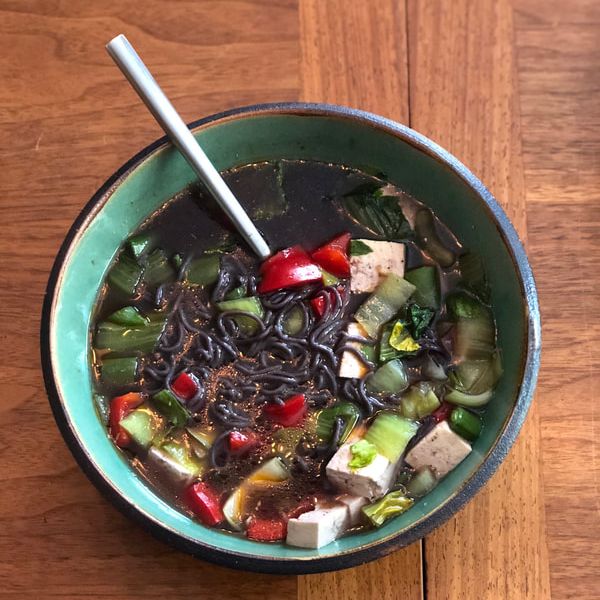|
What we know about nutrition changes every day. This is one of the things that makes being a nutritionist so fun and exciting - there's always something new to learn!
As an eater, who strives to do right by your body, this may also pose a challenge. It's tempting to eat the same thing day after day once you've dialed in what works for you. You find a formula that satisfies your appetite, is balanced, nutritious and doable. Why not rinse and repeat, right? It turns out that variety is not just the spice of life, it also imparts benefits to the body. Why? It's all about color! Phytonutrients are found in all plants. They are the pigments that give plants color, including anthocyanidins (blue, purple, black) and carotenoids (orange, red, yellow). They have potent antioxidant potential, helping to relieve oxidative stress that can lead to inflammation and disease. Interestingly, phytonutrients are also slightly toxic. This is actually beneficial to eaters because they gently guide and train the immune system, making it stronger and more resilient to infections and disease. Interesting stuff! The microbiome of the large intestine plays an intimate role in metabolizing phytonutrients. These chemicals are not broken down efficiently in the upper digestive tract where most nutrients are digested and absorbed. Instead phytonutrients make their way to the colon and are activated by the microorganisms there. Phytonutrients influence the microbes, encouraging a healthy immune response and reducing inflammation. In turn, the microbes transform phytonutrients into phenolic compounds that can be absorbed and used by the host/eater. It is largely accepted as truth that eating vegetables and fruits is an important feature of a healthy diet. Every client I talk to knows that the one thing they can do to improve their diet is to eat more from these food categories. That being the case, Americans tend to struggle with this dietary adaptation. Only 9% of Americans meet the USDA's recommendation of daily vegetable intake and 12% meet that for fruit. Affordable access to fruits and vegetables is a major concern in the wellness sphere. Additionally, preparation and storage of fresh produce is a barrier for many people. These concerns are beyond the scope of this article but worth mentioning as a contributing factor to the low consumption of fruits and vegetables in the US. In my experience and opinion, it's not an issue of educating the public on the health benefits of these foods, but an issue of equity. Insufficient vegetable and fruit intake has a detrimental impact on vitamin and mineral status, but there's more to plant-based foods than that. As researchers further our understanding of the role phytonutrients play in human health, a phytonutrient gap becomes apparent. One recommendation I make often to my nutrition clients is to eat the rainbow in plants every day. Getting in the habit of grabbing a red, orange, yellow, green, blue and purple item from the produce department is a great start to a meal plan that powers disease prevention and wellness. Phytonutrients are present in all plants. In addition to vegetables and fruits, nuts, seeds, grains, legumes, herbs and spices contain these compounds. Getting in the habit of making colorful, flavorful and beautiful food is a way to increase the phytonutrient density of your meals...while also giving your eyes a feast as well! If food preparation and cooking is a barrier for you working this habit into your life schedule, here are a couple tips to make eating the rainbow more manageable:
If you enjoy cooking with a recipe, here are a couple plant-heavy food blogs and cookbooks I recommend for getting inspired and making something delicious to enjoy:
Eating the rainbow can be a really fun self-care strategy that brings pleasure to all your senses and wellness to every system in your body. Bring on the color!
0 Comments
If you have a home garden, chances are you are flush with raspberries right now! I don't eat much fruit because as far as I'm concerned fruit is only good when it's in season and close to the source. Living on the North Coast means we have a small window in time to enjoy fresh berries, cherries, apples and pears. I grow two varieties of raspberries - red and yellow - and plan to add a black raspberries next spring. Our berry vines are overflowing with summer bounty right now, so every night I'm out picking fruit...and shoving it right in my mouth! Raspberries bring something special to the table - more than just deliciousness. They are the best source of ellagic acid, a polyphenol (antioxidant) nutrient that has potent anti-cancer activity. In animal studies, ellagic acid has slowed the growth of cancer cells and helped make them inactivate1. Ellagic acid also shows up in research on beauty and aging, showing some promise for reducing wrinkles and skin damage caused by UV-B rays (that will make my mom happy)2. Can you imagine your esthetician advising you to eat more raspberries for your skin health? Best. Homework. Ever! The power of plants continues to awe and amaze me. While I love fresh raspberries more than anything, I just cannot keep up with the volume of raspberries coming in from my backyard (can I just say what an awesome problem that is to have?!). I'm not much of a baker and try to limit my sugar intake anyway, so this week I worked on a new smoothie recipe that combines a couple of my all-time favorite anti-cancer ingredients. For fun, I made it a little thicker than you can slurp through a straw. Hope you like it! Matcha Berry SmoothiE BowlIngredients:
Directions
Collagen peptide supplements have become all the rage in recent years. With claims of eliminating joint pain and smoothing skin, hair and nails, who wouldn’t want to give this versatile protein powder a try? Collagen is a protein found throughout the body. It’s a strong molecule, making up tendons and ligaments, the flexible matrix of bone and teeth, joint cartilage, connective tissue, arteries, skin and hair. Because it can be found in all these places in the body, collagen supplementation sounds like a panacea. Do the claims – and potential – actually live up to the hype? Before jumping on the collagen cure-all bandwagon and recommending it to all my clients, I scoured the scientific literature for nuggets of truth in the claims. Here’s is my attempt at summarizing the answers I found to my questions in 500 words or less: Regarding joint health: Collagen supplements increase production of hyaluronic acid, a major component of the synovial fluid that lubricates our joints and other tissues, allowing them to slide across each other. In a small study with 97 participants, collagen supplements were shown to improve joint pain. Interestingly, the longer the subjects took the supplement, the less impact it had. This suggests that taking collagen supplements may help maintain joint health, and be helpful for people with joint pain or osteoarthritis but it likely won’t resolve the issue completely (1). Another study explored the impact of collagen supplements on rheumatoid arthritis and found that it reduced joint swelling and tenderness (2). Regarding hair skin and nails: In the body, collagen stimulates cell proliferation (reproduction) and accelerated cell migration to the skin (3). After 90 and 180 days of taking a collagen supplement, women with thinning hair had more growth, volume, scalp coverage, and shine. They also found greater moisture retention and smoothness to their skin (4). Skin dryness and breaking down of the collagen matrix in the skin are hallmark signs of aging. Oral collagen increases the density of collagen in the skin after 8 weeks of supplementation (5). Collagen cannot confer benefits when used topically, however, so save your money on skin care products listing collagen as one of the ingredients. The molecule is just too large to be absorbed through skin cells. Collagen supplements may be helpful with nails that break or peel, or simply don’t grow. Taking supplements for 24 weeks improved nail health in a study on brittle nail syndrome. These benefits persisted even a month after supplements were discontinued (6). If you’re interested in adding collagen supplements to your health regimen, here are a few things to keep in mind:
One thing that appeals to me about this supplement is its versatility. You can add protein powder to smoothies or roll these delicious Lemon Turmeric Energy Bites, blend it up in your bullet coffee or stir it into a glass of water. It’s tasteless and very versatile. Have you tried using collagen? What did you notice? What are your favorite collagen recipes? References
1) Clark KL1, Sebastianelli W, Flechsenhar KR, Aukermann DF, Meza F, Millard RL, Deitch JR, Sherbondy PS, Albert A. 24-Week study on the use of collagen hydrolysate as a dietary supplement in athletes with activity-related joint pain. Current Medical Research and Opinion; 2008 May 24(5):1485-96. 2) Trentham DE, Dynesius-Trentham RA, Orav EJ, Combitchi D, Lorenzo C, Sewell KL, Hafler DA, Weiner HL. Effects of oral administration of type II collagen on rheumatoid arthritis. Science. 1993 Sep 24;261(5129):1727-30. 3) Lee SK, Posthauer ME, Dorner B, Redovian V, Maloney MJ. Pressure ulcer healing with a concentrated, fortified, collagen protein hydrolysate supplement: a randomized controlled trial. Advanced Skin Wound Care. 2006 Mar;19(2):92-6 4) Ablon, G. A Double-blind, Placebo-controlled Study Evaluating the Efficacy of an Oral Supplement in Women with Self-perceived Thinning Hair. Journal for Clinical and Aesthetic Dermatology. 2012 Nov; 5(11): 28–34. 5)Asserin J, Lati E, Shioya T, Prawitt J. The effect of oral collagen peptide supplementation on skin moisture and the dermal collagen network: evidence from an ex vivo model and randomized, placebo-controlled clinical trials. Journal of Cosmetic Dermatology. 2015 Dec;14(4):291-301. 6) Hexsel D, Zague V, Schunck M, Siega C, Camozzato FO, Oesser S. Oral supplementation with specific bioactive collagen peptides improves nail growth and reduces symptoms of brittle nails. Journal of Cosmetic Dermatology 2017 Dec;16(4):520-526. I am a self-crowned queen of one-pot meals. They make my world go round. Recently I've been jamming on a tofu and veggie noodle soup dish that has been hitting the spot for weeks. Now, soy has gotten a bad rap over the years, that has largely been unresolved. Before you dig into the following rant about that, get you soup going - it will be ready by the time you finish reading this. There are two big things about soy that come up in my work with clients and conversations with other wellness junkies: 1) Soy is an allergen. It is one of the 7 most common food allergens, and for that reason can be problematic for people. People who have an allergy to soy may experience difficulty breathing, hives, rapid heart rate, tightening in their throat or chest, and other not fun and potentially life threatening symptoms. An intolerance to soy (or any other food) could be less straightforward. Food intolerances are sneaky, sneaky. Symptoms include digestive upset of all shapes and sizes, muscle and joint pain, headaches and migraines, brain fog, fatigue, eczema and much more fun. An Elimination Diet is the best way to identify food intolerances. 2) Compounds in soy have been named "phyto-estrogens" and implicated in various health concerns, including the obesity epidemic - especially a pattern of fat accumulation that had been identified as "feminine" (i.e. breasts, butt and thighs) - early puberty, breast and other cancers of the sex organs. Years ago, I heard a retelling of a conversation with the biochemist who identified phytoestrogens in which he reported regret for the naming of the compound, because it raised some significant alarm and dissuaded individuals from eating soy. I mean, when hormones like estrogen are implicated in all kinds of diseases, who would want to eat it? (this is all hearsay so don't quote me on it) Phytoestrogens were named such because they resemble the chemical structure of estradiol, an active form of estrogen. This molecular mimicry allows phytoestrogens to attach to estrogen receptors in the body and exert a similar effect. While they're able to bind to these receptors, they do so weakly thereby exerting a weaker effect than estradiol or other forms of estrogen. The consequence of this is that estradiol remains in circulation and is therefore shuttled to detoxification and elimination. What does that mean for our health? Well, it turns out that these compounds, a class of isoflavones, actually protect against those cancers we previously feared. If you want to read more about that, I recommend this article by Dr. Tina Kaczor who dug into the literature to better understand what the relationship between soy consumption and cancer actually was. Bottom line: People who are allergic or have an intolerance to soy should not eat it. But if you're not allergic to soy, even if you have a family history of breast cancer, bon appetit. One last note on soy foods before I give you this delicious recipe: not all soy foods are created equal. Imagine a drive through the Minnesota countryside: on your left you see corn waving in the wind as far as your eye can see. And on your right, you see soy replenishing the corn-depleted soil from last years growing season. Combined, corn and soy make up 50% of all crops grown in the US. We are so good at growing corn and soy that food scientists had to figure out what to do with all of it, and now byproducts of each are in virtually every box, bag or can of food.
If you read Dr. Kaczor's article, she'll make a case for including soy no matter the source. I have a little more conservative approach. When advising clients about choosing the foods with the highest nutritional value, I recommend limiting soy consumption to the whole food and traditionally fermented products: edamame, fermented tofu, tempeh, tamari or soy sauce. If shopping for soy milk, choose a product with the fewest ingredients possible...which should be water, soybeans and maybe some salt. Rant complete. You ready for that recipe now? This soup is best eaten freshly prepared. The noodles do not hold over well and will get unappealingly mushy if cooked and stored. Store your prepped ingredients separately for an easy to assemble meal. INGREDIENTS for 4 servings:
DIRECTIONS:
*I am not affiliated with these brands and do not make a commission on recommended their products to you. |
I love food.I love thinking about it, talking about it, writing about it. I love growing food, cooking and eating food. I use this space to try to convey that. Follow me on social media for more day-to-day inspiration on these topics. Categories
All
|






 RSS Feed
RSS Feed